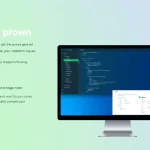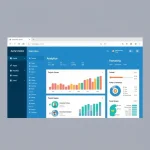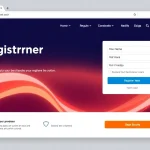Understanding Informatics
What is Informatics?
Informatics is a multifaceted discipline that seeks to harness the power of data, knowledge, and information technology to improve various domains, notably healthcare. Broadly speaking, it deals with the collection, processing, and analysis of information, providing the framework for enhancing knowledge and decision-making processes. In the backdrop of healthcare, informatics plays a crucial role in improving patient outcomes, streamlining workflows, and facilitating effective communication among healthcare providers. More than just a technical field, it combines elements of computer science, information science, and cognitive science to create systems that are user-friendly and easy to navigate.
The Importance of Data in Healthcare
Data is often called the new gold, especially in healthcare, where precision and timely information can significantly influence treatment decisions and outcomes. Informaticians analyze vast amounts of health data from diverse sources, such as Electronic Health Records (EHRs), medical devices, and patient surveys, to derive insights that can foster better patient care. For instance, the integration of predictive analytics can forecast disease outbreaks or track health trends, enabling proactive measures in public health. The application of data analysis in healthcare not only enhances operational efficiency but also empowers practitioners with actionable knowledge, making data a fundamental asset in modern healthcare ecosystems.
Key Concepts in Informatics
Several key concepts underpin the discipline of informatics, particularly in the healthcare sector. These include:
- Interoperability: The ability of different information systems and software applications to communicate and exchange data seamlessly.
- Patient-Centered Care: Informatics focuses on making healthcare more patient-centric, ensuring that the patient’s needs and preferences are a priority in decision making.
- Data Security and Privacy: With sensitive health data being collected and shared, ensuring the confidentiality and safety of patient information is paramount.
- Data Governance: This refers to the overall management of the availability, usability, integrity, and security of data used in an organization.
Applications of Informatics in Healthcare
Electronic Health Records (EHRs)
EHRs have revolutionized the way patient information is recorded and shared. They allow for comprehensive digital records that are accessible in real-time by authorized healthcare professionals, improving continuity of care. The ability to pull data from multiple sources contributes to richer patient histories and better care coordination. Moreover, EHRs facilitate compliance with regulations such as HIPAA, ensuring that patient information is stored securely and accessed only by those who need it.
According to a study published in https://www.informaticsview.com, facilities that utilize EHRs report a 10-15% increase in efficiency due to reduced paperwork and quicker access to patient histories, enabling practitioners to focus more on patient care rather than administrative tasks.
Telemedicine Innovations
The rise of telemedicine has marked a significant milestone in healthcare informatics. Telemedicine uses technology to deliver clinical services remotely, allowing patients to consult healthcare providers without physically visiting a clinic. This has enormous benefits, particularly for patients in rural areas with limited access to healthcare facilities. Telemedicine platforms use secure communications and data transmission protocols to ensure the privacy of patient-doctor interactions. Evidence suggests that telehealth can lead to a reduction in emergency room visits and hospital readmissions, thus easing the burden on healthcare infrastructures.
Clinical Decision Support Systems
Clinical Decision Support Systems (CDSS) leverage patient data and evidence-based clinical guidelines to assist healthcare providers in making informed decisions. These systems analyze data to provide alerts, reminders, and recommendations directly in the clinical workflow. For example, CDSS can warn a clinician about potential medication interactions based on a patient’s current prescriptions, ensuring increased safety and quality of care. Furthermore, with the advancement of machine learning, CDSS continues to evolve, becoming more predictive and personalized in their recommendations.
Challenges in Implementing Informatics
Data Security and Privacy Concerns
Despite the benefits of informatics, the healthcare sector faces significant challenges regarding data security and patient privacy. Cybersecurity threats are constantly evolving, and healthcare data breaches can expose sensitive patient information, leading to a loss of trust and legal ramifications. Organizations must invest in robust security measures, including encryption, firewalls, and training staff on cybersecurity best practices. Addressing these concerns is vital for fostering a culture of safety and trust in the use of informatics within healthcare.
Integration with Existing Systems
Integrating new informatics systems with existing technology infrastructures can pose serious difficulties, especially in healthcare organizations with varied systems and software applications in use. Interoperability challenges can lead to data silos, hindering the smooth sharing and utilization of information across departments. To mitigate these issues, organizations should conduct thorough assessments during the planning phase to identify compatibility issues and ensure cohesion of data across all platforms.
User Adoption Barriers
Another barrier to implementing informatics solutions successfully is user adoption. Healthcare professionals may be resistant to using new technologies due to concerns over their effectiveness or usability. Training and support are essential to overcoming these barriers. Organizations must invest in comprehensive onboarding processes for new systems, including ongoing support to ensure that clinicians feel comfortable using the technology and recognize its benefits.
Best Practices for Healthcare Informatics
Effective Data Management Strategies
Effective data management is the cornerstone of successful informatics applications in healthcare. This involves establishing clear protocols for data collection, storage, access, and sharing. Healthcare organizations should prioritize data integrity and develop policies that outline the usage of data within the organization. Features like automated backups, regular audits, and clear documentation can help ensure that data remains accurate and accessible to authorized personnel only.
Enhancing User Experience and Training
Healthcare informatics systems must be designed with the user in mind. A user-friendly interface can significantly enhance the experience and ensure higher adoption rates among clinicians. Additionally, tailored training programs are vital for empowering healthcare providers to utilize informatics tools effectively. Such programs should focus on practical applications of the systems, utilizing case studies and real-life scenarios to demonstrate their value in patient care.
Continuous Improvement through Feedback
Continuous improvement should be part of the lifecycle of informatics applications. Organizations must establish mechanisms for collecting feedback from users and stakeholders. Regularly soliciting input allows for service adjustments and enhancements based on real-use scenarios and challenges faced by users. Implementing responsive updates based on this feedback not only improves the systems but also fosters a culture of collaboration and trust within the organization.
The Future of Informatics
Emerging Technologies and Trends
The future of informatics is bright, characterized by rapid technological advancements and innovative approaches to data management and utilization in healthcare. Emerging technologies such as blockchain for data sharing, the Internet of Things (IoT) for remote patient monitoring, and augmented reality (AR) for enhanced surgical procedures are reshaping how healthcare is delivered. Adopting these technologies can lead to improved patient outcomes and more efficient operations within healthcare systems. Moreover, understanding and leveraging these trends allows healthcare stakeholders to remain competitive in an evolving landscape.
The Role of Artificial Intelligence
Artificial intelligence (AI) is poised to become a game-changer in the field of healthcare informatics. From predictive analytics that anticipate patient needs to machine learning algorithms processing vast datasets for better decision-making, AI presents unprecedented opportunities. It can automate routine tasks, enhance diagnostics, and even personalize patient experiences through tailored treatment plans. As healthcare providers adopt AI-driven solutions, they must also ensure ethical considerations are at the forefront of implementation, protecting patient rights and privacy.
Predictions for Healthcare Informatics
Looking ahead, several predictions can be made regarding the trajectory of healthcare informatics. Increased use of telehealth will continue, particularly as remote care technologies become more sophisticated. The drive toward patient engagement will lead to the development of consumer-facing applications that empower patients to take charge of their health data actively. Additionally, as regulatory landscapes adapt to new technological realities, organizations may experience greater support and funding for innovative informatics solutions aimed at enhancing care delivery.
In conclusion, healthcare informatics presents a multitude of opportunities and challenges that require careful consideration and proactive strategies. By understanding its key concepts, applications, best practices, and future developments, stakeholders can navigate the complexities of informatics effectively, ultimately enhancing patient care and operational efficiencies.








